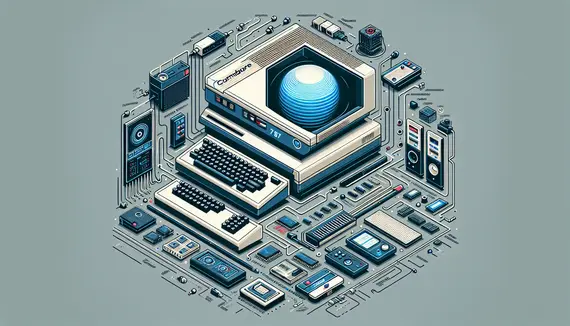
Introduction: A Blast from the Past
In an exciting yet risky venture, the legendary name of Commodore is being resurrected, hoping to tap back into the nostalgic heart of retro computing enthusiasts. Many still hold fond memories of these classic machines, and their revival aims to ignite the same passion in a new generation. However, the process of bringing such an iconic brand back to life is not without its hurdles.
The Allure of Retro Computing
The charm of retro computing lies in its simplicity. For many, the Commodore computers represent a golden era when personal computing was just beginning to take shape. It reminds users of the days spent exploring technology, limited by fewer distractions and straightforward functionalities. These machines gave birth to a community of enthusiasts and hobbyists, who loved not just using them but also tinkering under the hood.
Challenges in the Modern Market
A major challenge in reviving Commodore is the present computing landscape, which is vastly different from the 1980s when the brand thrived. Today’s market is saturated with rapidly evolving technology and exceedingly high consumer expectations. Products are expected to be sleek, powerful, and integration-capable with other devices and platforms.
For Commodore to capture the interest of modern users, it must strike a delicate balance between honoring its roots and innovating at the pace of today’s tech world. This challenge is steep, considering modern users are accustomed to seamless interfaces and instant connectivity, which were not the focus of retro computing.
Commodore's Competition
The market is not only competitive because of modern tech giants but also due to the presence of other brands embracing retro revivals. Companies like Atari and others have made strides in bringing back vintage devices with a modern twist. For Commodore's revival to stand out, it needs a unique approach—offering something that is both reminiscent of the past and adaptable to today's digital expectations.
Updating the Technology
Updating the iconic Commodore models to current technological standards is a complex endeavor. True to its legacy, Commodore computers were about accessibility and user friendliness, aspects that still hold value today. However, integrating new technology without losing that original charm is a painstaking process.
From employing modern processors to enhancing graphic capabilities, every modification needs to be scrutinized to ensure the essence of what made Commodore special isn’t lost. Additionally, these updates must comply with present-day software requirements and security standards, which adds a layer of intricacy to the development process.
Community and Nostalgia: A Double-Edged Sword
While the sense of nostalgia fuels the demand for such a revival, it can also be quite unforgiving. The community of Commodore enthusiasts carries with it high expectations. They are a passionate group, deeply connected to the brand. If the revival seems even slightly commercialized or inauthentic, the backlash could be significant.
The challenge lies in keeping this community engaged while appealing to non-traditional users who might be drawn to the retro computing ethos for the first time. Understanding the pulse of both these sections is crucial in ensuring the successful comeback of Commodore.
Marketing the Revival
Reintroducing Commodore to a new generation requires carefully crafted marketing strategies focusing on the brand’s deep-rooted history. The revival needs a campaign that showcases its historical importance, while also emphasizing the unique offerings of the newly updated machines.
Marketing campaigns should draw on storytelling, sharing the journey of the brand through the decades and highlighting its impact on the computing world. Engaging content like videos, podcasts, and interviews with individuals who shaped the original Commodore narrative can breathe life into the campaign.
Target Audience
Identifying and reaching the target audience is paramount. While the nostalgic crowd forms a significant part of this audience, it is equally essential to attract those who may not have used Commodore computers before. The appeal of retro tech as a trendy and unique alternative to contemporary offerings should not be underestimated.
Positioning Commodore as not just a gadget but as a cultural artifact could intrigue a broader audience. Showing how the brand can be part of both professional and personal life might attract tech enthusiasts and introverts who savor simplicity and authenticity in technology.
Looking Ahead
As the Commodore brand eyes its place in the future landscape of personal computing, it faces both opportunity and adversity in equal measure. This journey will be a testament to whether the brand can successfully blend its historic allure with the technological demands of today's world.
While challenges are imminent, what remains indisputable is the potential impact of a successful revival. Commodore’s re-emergence offers more than just a throwback to the past; it represents a homage to technological evolution and innovation.
In conclusion, the Commodore revival is an ambitious endeavor steeped in both nostalgia and future possibilities. Its success will depend not only on the advancement of technology but also on the undying spirit of its community—old and new—willing to champion its journey. As the world watches this classic icon's journey back onto our screens, one can only hope that the revival will inspire, innovate, and bring joy, just like it once did.









